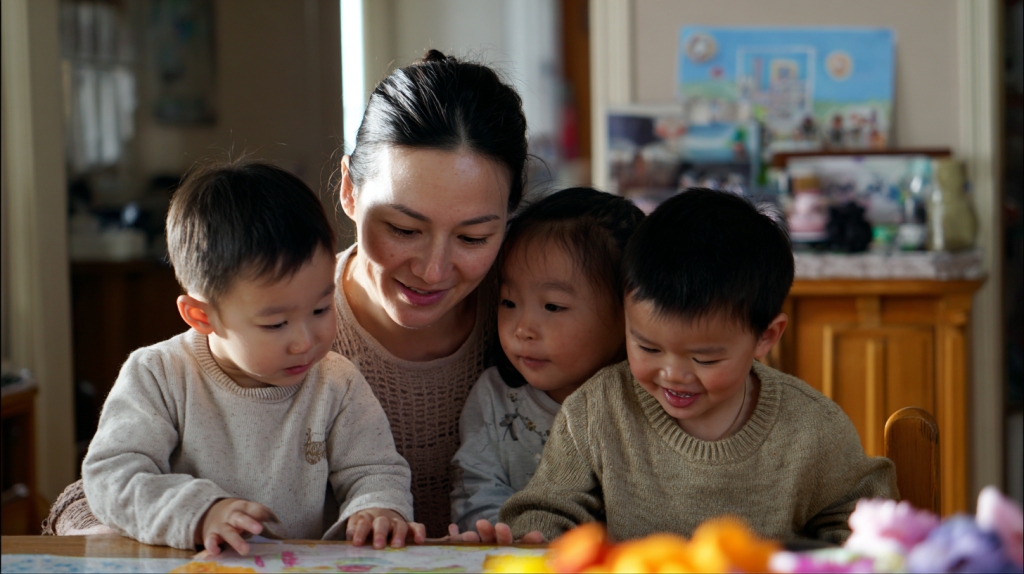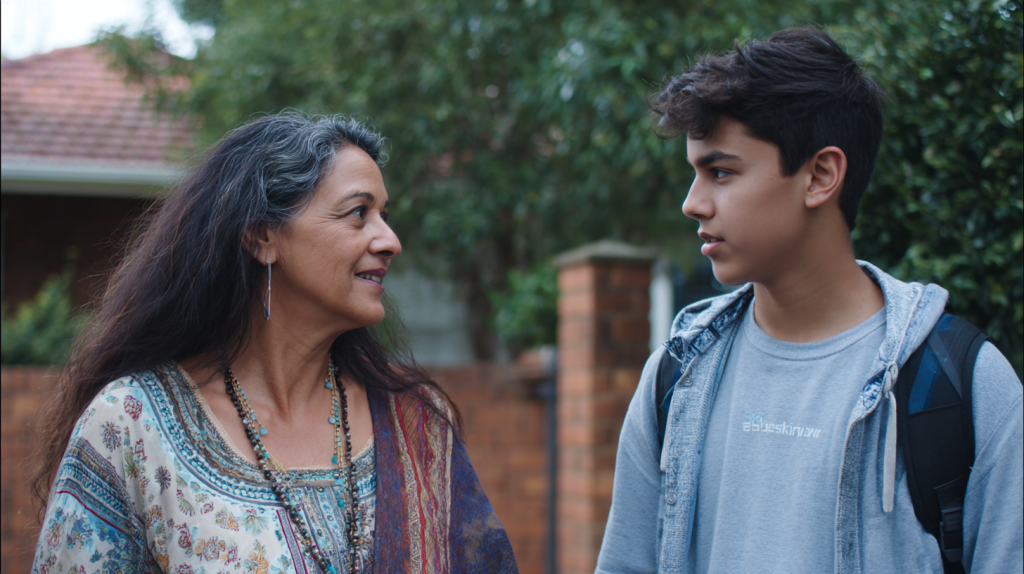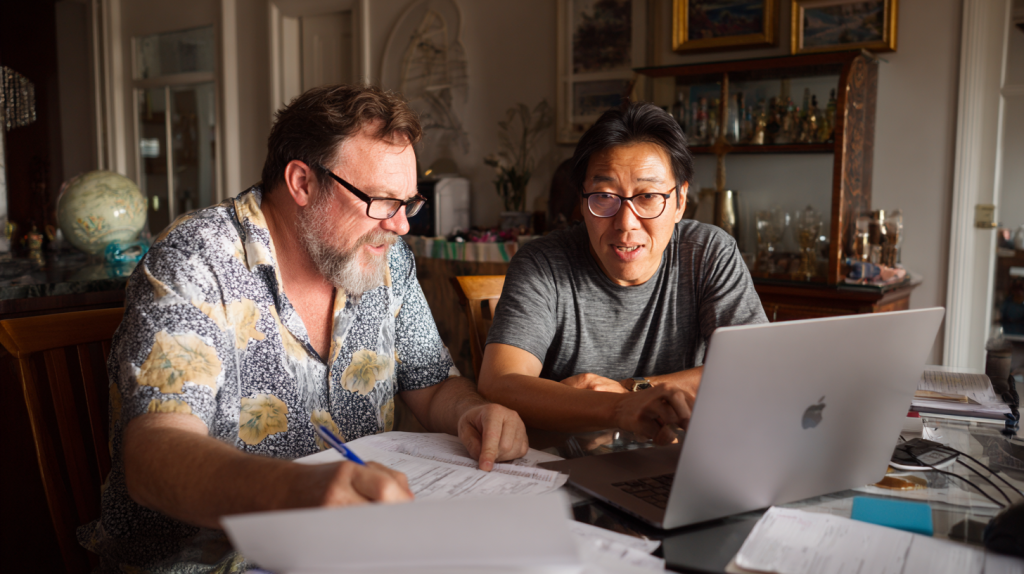Applying for a Partner visa is often one of the biggest steps in bringing your loved ones together in Australia. But when the paperwork asks about “member of a family unit,” it can get a little confusing. Does that mean just your partner? Can you include your kids? What about step-children or other relatives?
Understanding who counts as a member of a family unit is important because it can affect how smoothly your application goes, who can be included from the start, and whether you’ll face unexpected delays. In this guide, we’ll break it all down in plain English. By the end, you’ll know exactly who can be added to your application and how to avoid common mistakes along the way. Let’s explore who is considered a member of the family unit!
Key Takeaways:
- The family unit is you, your partner (spouse or de facto), and your dependent children.
- Dependent children include biological, adopted and stepchildren who rely on you financially or emotionally.
- Generally, children under 23 can be included if dependent and not fully self-supporting.
- Children of any age with a permanent disability may be included.
- Shared custody kids can be included if you provide substantial support and care.
- I often see people overlook stepchildren or dependents abroad. Include anyone you support.
- Include everyone you support and keep clear evidence of your relationship and financial help.
Understanding who qualifies as a member of your family unit can make or break your Partner Visa application. At Sellanes Clark Immigration Law Specialists, our team helps couples and families ensure every detail aligns with Australia’s complex immigration rules. Visit our website to learn how we can simplify your visa process.

Understanding the Concept of a Family Unit
Defining the Family Unit in Legal Terms
For visa rules, the family unit usually means your spouse or de facto partner and dependent children. Dependent children are normally under 18, or aged 18–23 if they are full-time students or financially dependent on you. Adult dependents with a permanent disability can also be included. Stepchildren and adopted children count when you provide day‑to‑day care and support. I advise clients to gather birth, adoption, and school records to prove these relationships.
Importance of the Family Unit in Partner Visa Applications
Who you list affects fees, health checks, and processing steps for your Partner visa. Including a child triggers extra health examinations and police checks for that person. I’ve seen applicants who omitted a 20‑year‑old student and later lodged a separate application, adding time and extra fees. You should weigh the costs and paperwork before deciding who to include.
Documentation needs rise quickly when you include family members. Expect to provide birth certificates, school records, proof of financial support, and evidence of who cares for the child. In my experience, adding a dependent can extend processing by three to six months, depending on medical and police clearances. Plan timelines and budget accordingly.
Cultural Perspectives on Family Units
Many cultures view family more widely than immigration forms do. For example, in Asian and Pacific communities, three‑generation households are common and grandparents often share child care. You may live with cousins or extended kin who act as primary carers. You should explain these living arrangements clearly and back them with everyday evidence. I advise clients from close‑knit cultures to prepare this proof early, because claims rarely satisfy case officers without supporting documents.
Who Qualifies as a Member of the Family Unit?
Spouse or Partner
You qualify as the sponsor if you are married or in a de facto relationship with your partner. De facto couples usually need 12 months living together, unless you hold a registered relationship or meet an exception. I advise documenting shared bills, joint leases, and photos showing your life together. Consistent evidence speeds decisions and reduces questions from the Department.
Biological and Adoptive Children
Children under 18 are normally included as family unit members. Young adults aged 18 to 23 can be included if they are full-time students and dependent on you. In addition, they must not be married or in de facto relationship. Adults of any age may join if they are financially and socially dependent due to disability. Adopted children must have a legal adoption recognised by their country and you should supply the adoption papers.
Step-Children and Their Inclusion
Step-children can be part of your family unit if they live with you and rely on you financially or socially. The age rules are the same: under 18, or 18–23 if they’re full-time students and still dependent, or any age if they have a disability that means they depend on you. Just remember to include them when you first apply and provide documents that clearly show the family connection and their dependence on you.
A real-life example makes this clearer. Imagine a 16-year-old step-child who has lived with you for two years. If their school reports and bank records show that you’ve been supporting them, they’ll usually meet the requirements. Helpful evidence can include court orders, school enrolments, shared utility bills, and statutory declarations from both you and your partner. I also suggest adding a short timeline of living arrangements. It paints a simple picture of how the child has been part of your household and care.
Dependent Children: Age and Status Criteria
Age Limits for Dependent Children
A dependent child is usually under 18 for Partner visa purposes. Children aged 18 to 23 can qualify if they are full-time students and financially dependent on you. Any age may be accepted if the child cannot support themselves because of a permanent disability. Include stepchildren and adopted children under the same rules, and state clearly who provides housing, tuition, or living costs.
Full-Time Students and Their Dependency Status
A full-time student aged 18 to 23 can be your dependent if you provide their main financial support. Show enrolment letters, course load, and evidence you pay tuition or living costs. A 20-year-old at university who lives with you and whose rent and fees you pay commonly meets this test. Explain how much you pay and how often.
Disabilities and Financial Support Requirements
A child of any age with a disability that stops them working may be included as dependent. Provide medical reports that describe the condition and functional limits. Show proof you meet ongoing costs, like medical bills, care payments, or living expenses. A 30-year-old with a permanent impairment who relies on you for daily care can be included with adequate evidence.

Inclusion of Adult Children in the Family Unit
Eligibility Criteria for Adult Children
Children under 18 are usually included. Adult children can be included if they are single and genuinely financially dependent on you. Long-term disability that stops them from working also qualifies. For example, a 20-year-old university student who relies on you for rent and living costs can often be added to your application.
Financial Dependency Assessment
Decision makers look for regular, ongoing support from you. They check if you pay rent, buy food, or cover major bills. They also consider whether the child can support themselves through work or savings. Consistent payments over months carry more weight than one-off gifts.
Make sure you provide clear evidence of the support pattern. Use bank transfers showing weekly or monthly payments. Include rental ledgers, utility bills in the child’s name with your payments, school fee receipts, or signed tenancy agreements. State the amount you contribute and for how long. From my experience, showing at least six months of consistent support makes the claim much stronger.
Documentation Requirements for Inclusion
Submit the child’s birth certificate or adoption papers, passport copy, proof of single status, and documents proving your financial support. For disability claims, include medical reports and specialist letters. Short statements from you and the child explaining the living and support arrangements help tie the evidence together.
Be sure to gather certified copies and certified English translations for any foreign documents. Organise bank statements covering transactions for at least six months, invoices, school enrolment letters, and rent receipts. Use statutory declarations from family members or landlords to explain informal arrangements. I recommend a brief cover sheet that matches each document to the specific dependency claim.
Situations for New Additions After Application Submission
Birth of a Child During the Visa Application Process
If you have a baby while your Partner visa is being processed (congratulations!), notify the department and supply the birth certificate, passport application if ready, and photos. You can usually add the child to your application as a dependent if they meet the family unit rules. We recommend clients lodge these documents quickly to avoid delay or confusion.
Adding Adopted Children Post-Application
If you adopt a child after applying, provide the final adoption order, birth certificate, and any court or agency paperwork. The adoption must be legally final in the country where it happened. You should also show evidence that the child will live with you and depend on you for day-to-day care.
Considerations for Foster Care Arrangements
Foster children are not automatically part of your family unit for visa purposes unless you hold legal guardianship or long‑term custody. Provide court orders, care agreements, or written placement notices from the agency. Show records that you provide daily care, school enrolment, and financial support to strengthen the case.
When it comes to Partner Visas, even small misunderstandings about family unit eligibility can cause major delays. With over two decades of experience, Carlos Sellanes and his team provide the clarity and legal guidance you need to avoid costly mistakes. Discover how we can support your application — visit our website today.
Special Cases: Functional Family Units
Custody Arrangements and Joint Custody Situations
If you share custody, the amount of time the child lives with you matters. Evidence like a custody order, school records, travel diaries and photos showing 50/50 or 60/40 care helps. I’ve seen 50/50 arrangements accepted when clear proof showed regular overnight stays and shared financial support. Show who pays for health, school fees and day-to-day care.
Children Residing with Extended Family
If your child lives with grandparents or an aunt while you work overseas, they can still be part of your family unit. Provide legal guardianship papers, school enrolment, medical records and statutory declarations from the carers. I handled a case where a child lived with grandparents for 18 months and was included after we proved ongoing parental responsibility and financial support.
Impact of Same-Sex Partners on Family Unit Definitions
Same-sex partners are assessed the same way as opposite-sex partners for Partner visas. Proof like a marriage certificate, joint lease, shared bills, and photos over 12 months supports your claim. I’ve represented over 50 same-sex couples; consistent documentation and statements from friends and family often settle doubts quickly.

Proving Family Unit Membership
Required Documentation for Each Family Member
Provide passports and full birth certificates for every person you include. Add adoption papers or custody orders if they apply. Include identity cards, recent passport-sized photos, and certified English translations. If a child is over 18 but financially dependent, include school or university enrolment and medical records showing dependency.
Evidence of Financial Interdependence
One of the clearest ways to show your relationship is genuine is by proving you share your finances. This can include joint bank statements, shared utility bills, mortgage or rental agreements with both names, and even joint tax returns. You can also provide proof of regular money transfers between you and your partner, or receipts for shared expenses such as school fees, groceries, or medical bills. As a rule of thumb, I usually suggest collecting at least 12 months’ worth of statements if possible.
To make life easier for the case officer, highlight key transactions on your statements and add a short cover note explaining what each document shows. You can also include receipts for joint purchases, loan paperwork in both names, or letters from employers confirming salary splits or child support arrangements. If you send remittances to each other, show a consistent pattern over several months. And if all the funds move through one account, just add a quick explanation along with invoices or bills to show how the money is used for the household.
Relationship Proof: Living Arrangements and Affidavits
Submit a lease or mortgage showing both names, utility bills at the same address, and dated photos of you living together. Add school records for children, mail or council notices, and joint insurance policies. Provide statutory declarations from friends or family that explain your shared life and routines.
Affidavits should state how long the writer has known you, how often they saw you together, and specific examples of shared life. Use statements from landlords, neighbours, employers, teachers, or community leaders. Signatures should be witnessed or certified where required, and include contact details so immigration can verify them if needed.
Handling Complex Family Dynamics
Blended Families and Their Challenges
You may be juggling children from previous relationships, stepchildren and shared custody arrangements. I often see applications where proof of day-to-day care helps most: school records, shared bills, court custody orders and dated photos showing family life. If two stepchildren live with you more than half the time, include them as part of your family unit and supply evidence that shows residence and financial support.
Navigating Cultural Differences in Family Structures
Cultures vary in who lives in the household and who counts as “family.” Grandparents, cousins or customary spouses might form a family unit for you. Provide clear evidence of dependency, such as household rosters, remittance records, caregiving receipts or statements from community or religious leaders to show those relationships.
Customary marriages or non-western naming practices can complicate document checks. Produce marriage photos, dated ceremony invitations, and signed affidavits from elders or community leaders to explain the bond. Translate and certify key documents, and add school, clinic or utility records that show shared life. I use these kinds of practical proofs in cases with little formal paperwork.
The Role of Legal Guardianship
Legal guardians can also be recognised as part of your family unit if they have formal responsibility for a child living in your household. To show this, include documents such as guardianship orders, foster care agreements, school enrolments, or medical consent forms that prove you or your partner are the child’s legal carers. Short affidavits from social workers or welfare officers can also strengthen your case.
It’s worth noting that different types of guardianship carry weight. A court-appointed guardian, a long-term foster parent, or even someone holding power of attorney for a child all demonstrate formal responsibility. For example, if you’ve cared for a nephew for three years, school reports, health records, and letters from teachers or welfare agencies can help prove ongoing care. I usually recommend gathering a mix of official, dated, and community-based evidence to present a clear, well-documented picture.
Common Misunderstandings About Family Units
Exclusions That Are Commonly Misinterpreted
Many people assume grandparents, aunts, cousins or friends who live with you automatically belong to your family unit. That is rarely true. The family unit for a Partner visa usually means your partner and dependent children. Foster or step-children can be included if there is legal recognition or clear dependency. I often see applicants mistakenly add adult siblings or extended relatives who do not meet dependency or legal criteria.
Misconceptions About Common Law Relationships
De facto or common law relationships often need proof of a genuine, ongoing partnership. Australian practice generally looks for about 12 months living together, joint finances, shared bills, and public recognition of your relationship. Short cohabitation or occasional stays will not usually meet the test without strong supporting documents like leases, joint accounts, and photos.
I’ve seen approvals where applicants supplied at least three independent pieces of evidence. Good examples are a joint lease, a shared bank account showing regular transfers, statutory declarations from friends, and photos across several years. Breaks for work abroad do not always end a de facto relationship, but you should explain those gaps with travel records, letters, or employer statements.
Incorrect Assumptions About Financial Dependence
Financial dependence is not only about regular cash transfers. Paying school fees, covering medical costs, providing housing, or supporting daily living are all forms of dependence. Adult children who work part-time may still be dependent if they rely on you for most living costs. The decision rests on the full picture of support, not a single payment.
Make sure you provide concrete evidence such as bank transfers, invoices for school or medical bills, utility statements in your name, and signed statements from caretakers or professionals. I advise clients to collect at least two to three years of documentation when possible. Remember, clear timelines and consistent records make dependence easier to assess and explain to the case officer.

Application Processes and Family Unit Considerations
Steps for Including Family Members in Your Visa Application
First, decide who qualifies as part of your family unit first: usually children under 23, or older children who are financially dependent due to disability. List every eligible person on your Partner visa form and attach their documents. We tell clients to get certified copies and translations ready. Pay extra fees for each family member and arrange health checks and police certificates. Adding a later entrant can add six to twelve months to processing, so make sure you include everyone from the start when you can.
Checklist of Supporting Documents Needed
Collect passports, birth certificates, adoption or guardianship papers, custody orders, and proof of name changes. Add school records, medical reports for dependent adults, bank transfers showing support, joint bills or rental agreements, and family photos. Get police checks and health clearances for each person. All non-English documents need certified translations and certified copies by an authorised official.
For custody or guardianship, include orders with dates and court seals. For stepchildren, show at least six months of shared living evidence, such as school enrolment or utility bills in your name. If a dependent is over 23 and has a disability, provide medical assessments, ongoing treatment records, and proof you provide over 50% of their financial support. Use accredited translators and have originals certified by a justice of the peace, lawyer, or embassy official.
Engaging Legal Assistance for Complex Situations
Make sure you seek expert help when custody is disputed, overseas adoptions or surrogacy are involved, or a family member has prior visa refusals or criminal history. I often take on cases with cross-border custody or where dependency is contested. Legal support can speed evidence gathering and reduce risk of refusal.
Changes in Family Status During the Application Process
Reporting Changes Promptly to Immigration Authorities
Tell the Department of Home Affairs about births, deaths, new children, relationship changes or address changes as soon as you can. Use your ImmiAccount to upload documents and a brief note, or email your case officer if one is assigned. In my practice I advise clients to notify within 14 days where possible and to attach a birth certificate, passport page or legal document showing the change.
Potential Consequences of Omitted Information
Failing to disclose a new child, partner separation or other family change can lead to extra checks, processing delays, refusal of the application, or later visa cancellation. The Department may request further evidence or investigate suspected false statements, which can add weeks or months to your case and raise costs.
From my experience, one family who delayed notifying a newborn faced an eight-month delay while we provided affidavits, hospital records and revised financial evidence. You should disclose the omission immediately, explain why it happened, and supply supporting documents. If the omission might be seen as intentional, get legal advice quickly to manage the risk and prepare a clear written explanation.
The Importance of Keeping Records Up-to-Date
Keep current copies of passports, birth and marriage certificates, custody papers, and proof of address. Scan and store files in a secure cloud folder and keep originals accessible. I tell clients to label files with dates and descriptions so you can find documents fast when the Department requests them.
Practical steps work best: name scanned files with the person’s name and date, keep a simple log of when you notified immigration, and keep emails and upload receipts. If you change address or contact details, update both ImmiAccount and your case officer. Good records speed responses and reduce the chance of disputes about timing or identity.
Case Studies and Real-Life Examples
- Case 1 — Married applicant with partner and two children (ages 4 and 9). Visa subclass: Partner (820/801). Documents submitted: 45 items, including 6 statutory declarations and 24 months of joint bank records. Processing time: 12 months. Outcome: Approved. Key factor: clear birth certificates and shared financial evidence.
- Case 2 — De facto applicant included stepchild (age 11) and dependent adult parent (age 67). Parent claimed as family unit member. Documents submitted: 38 items. Processing time: 18 months. Outcome: Partner visa approved for applicant and stepchild; parent required separate sponsorship and was not included. Key factor: parental inclusion did not meet dependency rules.
- Case 3 — Married applicant included adult child (age 24) with disability. Medical reports showed 80% care needs. Financial support: $18,000 per year from applicant. Documents: 52 items including specialist reports. Processing time: 14 months. Outcome: Approved for whole family. Key factor: medical evidence and proof of ongoing financial dependency.
- Case 4 — Applicant tried to include a grandchild (age 6) with no legal custody. Documents: 12 items, mostly informal. Processing time: 9 months. Outcome: Grandchild excluded; applicant’s visa granted. Key factor: absence of legal guardianship or dependency evidence.
- Case 5 — De facto couple included two children from prior relationships (ages 7 and 13). Custody orders produced and 4 statutory declarations from ex-partners. Documents: 40 items. Processing time: 16 months. Outcome: Approved for applicant and both children. Key factor: clear court orders and shared care evidence.
To wrap up
Sorting out who counts as part of your family unit under a Partner visa doesn’t have to be stressful. In most cases, it’s your partner and dependent children, but there can be room for others if you have legal responsibility for them. Getting this right from the start can save you time, money, and delays down the track. If you’re unsure about your situation, it’s always worth getting professional advice so you can apply with confidence knowing your whole family is covered.
Each family is unique and so is every Partner Visa case. Since 2003, Sellanes Clark Immigration Law Specialists has helped families across Australia and abroad reunite with confidence. To find out how we can help you include eligible family members in your application, visit our website now.
FAQ
Q: Who counts as a member of the family unit for a Partner visa?
A: A member of the family unit is your spouse or de facto partner and their dependent children. I look at who lives with, depends on, or has strong ties to you. The Department usually expects inclusion of those who will migrate with the partner visa holder.
Q: Are my biological children included automatically?
A: Biological children are often included if they are dependent and under 18, or older but financially dependent. I assess care arrangements and whether they live with you. You must list them on the application even if they stay behind temporarily.
Q: Can stepchildren be included in my application?
A: Stepchildren can be included when they are dependent or live with you and your partner. I check legal and care ties, and whether the partner has responsibility for them. Provide birth and relationship documents to show the family link when you apply.
Q: What about adult children or dependents over 18?
A: Adult children may be included if they are financially or physically dependent, have a disability, or cannot live independently due to special needs. I ask for evidence of dependence and care. If they are independent, they normally cannot be included in your family unit.
Q: Can my partner’s parents or siblings be included?
A: Extended family like parents or siblings are not usually part of the family unit for a Partner visa. I explain that inclusion is limited to your partner and their dependent children. Those relatives may need other visa pathways if they want to come to Australia.
Q: If we are de facto, do my partner’s children count?
A: If we are in a de facto relationship, my partner’s children can be included when they live with us or depend on us financially. I look at evidence like school, health, and household records that show the children are part of our daily life and care.
Q: How do I declare family members on the application?
A: You must list every family unit member on the application form and supply proof of identity, relationship, and dependency. I recommend clear statements and supporting documents. If anyone changes after lodgement, tell the Department straight away to avoid problems with the visa decision.
Author Bio
Carlos Sellanes is the founder and principal of Sellanes Clark Immigration Law Specialists, an Australian firm established in 2003. Before launching the practice, Carlos spent more than two decades with Australia’s Department of Immigration, gaining unmatched insight into migration law and policy. Today, he leads a team recognised among the Top Ten Immigration Law Firms in the Asia-Pacific, offering expertise across skilled, family, and corporate visa categories. Through his blogs, Carlos shares practical updates and professional guidance to help clients navigate the complexities of Australian immigration with confidence. Learn more about Sellanes Clark Immigration Law Specialists.




